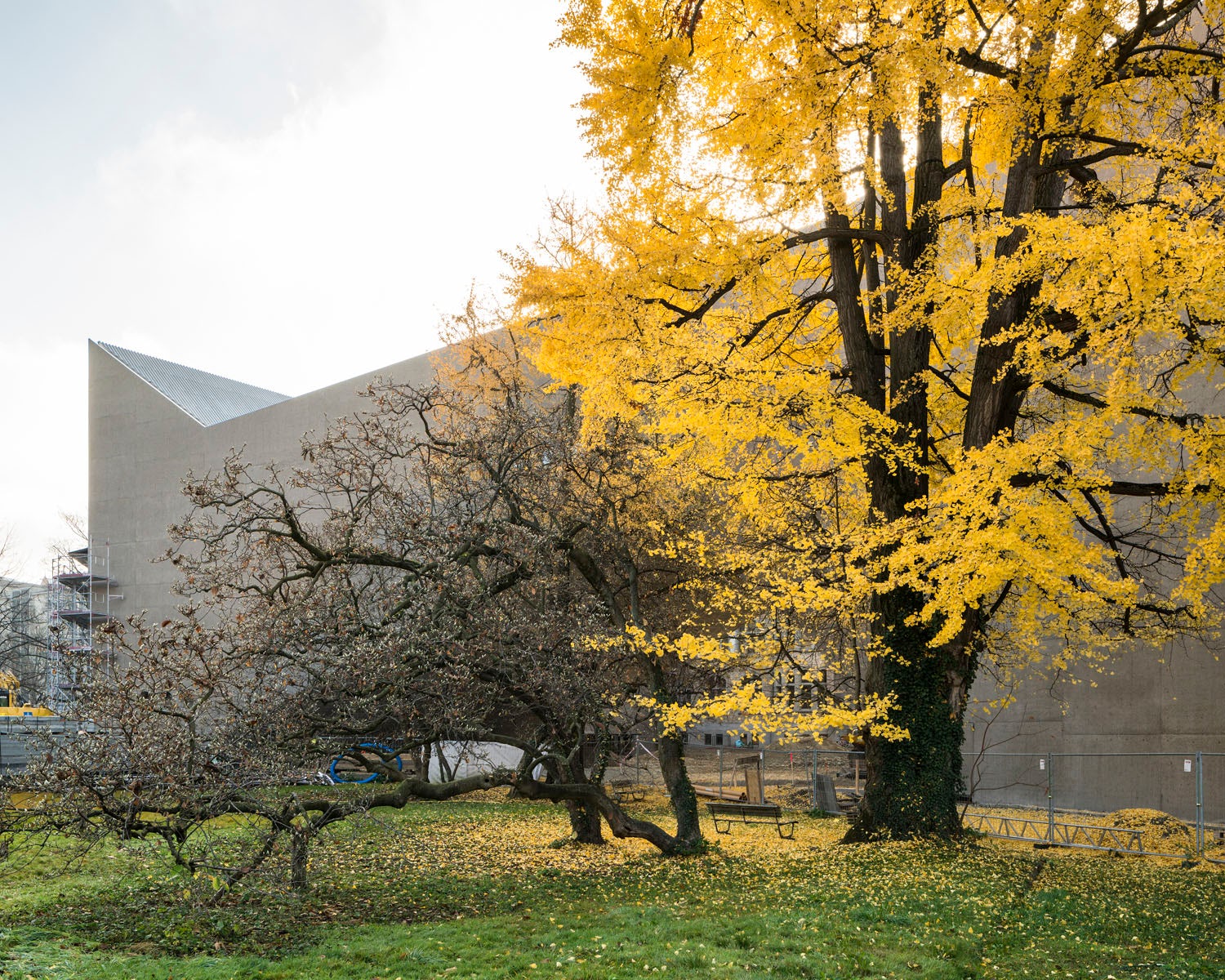The latest edition of “Architizer: The World’s Best Architecture” — a stunning, hardbound book celebrating the most inspiring contemporary architecture from around the globe — is now available. Order your copy today.
In recent years, Switzerland has seen a proliferation of new museum structures. These museums not only exhibit spectacles of Swiss history and culture, but collectively represent a curation of contemporary trends in Swiss architecture. Though each of these projects are working from the same traditions and operating in the same cultural context, and all of the projects are focused on accommodating similar programs, they take wildly diverse architectural approaches to get there.
The distinctions between each project are perhaps most profoundly felt in the materiality of their envelopes and the weightiness of their forms. Ranging from behemoth structures resembling the nation’s alpine landscape, to works as fragile as the mountain air, these projects suggest a spectrum of possibilities for architecture in general, and a variety of interpretations about the role of museums specifically. Many of these works are not independent structures for entirely new museums, but are intended to be accessories, additions or adaptations of existing institutions.
Therefore the projects are directly engaging with Swiss history, working with (or against) the designs and philosophies of pre-existing museums. The variety of forms created could provoke an important dialogue about the state of contemporary architecture, but more crucially interrogate the ways architecture can be used to advance the work of museums.

© Christ & Gantenbein

© Christ & Gantenbein

© Christ & Gantenbein
Swiss National Museum by Christ & Gantenbein, Zürich, Switzerland
Christ & Gantenbein’s design for the Swiss National Museum is a modern counterpart to a pre-existing 19th-century museum structure. The bare concrete Brutalism of their project contrasts strongly with the original building, but the design is actually intended to be an ode to the original structure. The structure’s heavy walls are not so different from the older building’s stone skeleton, while other historicizing elements may be found in the project’s vaulted ceilings and grand (if spartan) columns.

© Alexander Gempeler

© Alexander Gempeler

© Alexander Gempeler
Extension to the Historisches Museumby :mlzd, Bern, Switzerland
Another extension to a late 19th-century museum, :mlzd’s project does not evoke the museum’s architecture but rather provides an architectural interpretation of the postmodern landscape. One side of the structure takes on Brutalist ideas with a windowless concrete façade that blends into its surroundings like some urban erratic. Yet the other side offers a completely different distillation of modern architecture, with a glass curtain façade that seems to float out of the ground, creating a great contrast to the weighty form framing it.

© Michael Meier und Marius Hug Architekten AG, Armon Semadeni Architekten GmbH

© Michael Meier und Marius Hug Architekten AG, Armon Semadeni Architekten GmbH

© Michael Meier und Marius Hug Architekten AG, Armon Semadeni Architekten GmbH
Natural History Museum St. Gallen by Michael Meier und Marius Hug Architekten AG and Armon Semadeni Architekten GmbH, Saint Gallen, Switzerland
Much like the National Museum, the Natural History Museum in St. Gallen is, despite its appearance, a fusion of modern and traditional architecture. Though the structure’s exterior is composed of concrete, the building’s design is inspired by the architecture of the 19th century, when typologies for museums first became formalized. The project is very much a study of contrasts, and compensates for a heavy façade with wide windows and light, lofty exhibition halls.

© Barozzi / Veiga

© Barozzi / Veiga
Bündner Kunstmuseum Chur by Barozzi Veiga, Chur, Switzerland
Another counterpart to a preexisting museum, the Bündner Kunstmuseum Chur also represents a subtly historicizing foil to traditional Swiss architecture. The museum’s deceivingly small cubic form draws attention with a façade covered in textured panels, like the squares of a coffered ceiling, while concealing significant parts of the structure which reside underground. The building’s diminutive size is also designed to make up for the museum’s opaque profile and heavy materials. Occupying only a portion of its site, the structure becomes freed up, framed by the open space of the surrounding plaza.

© :mlzd

© :mlzd
Janusby :mlzd, Rapperswil-Jona, Switzerland
The Janus project does not only engage with an existing museum, but with architecture enduring from the 13th century. The aim of the project was to extend the museum in a way that did not disrupt this historic landscape, but with a structure that could still craft its own identity. The structure discreetly fills gaps in between buildings like the art of kintsugi, redefining the space and recontextualizing the forms around it. The building’s bronze façade gleams amidst the surrounding structures, elevating it with a loftiness beyond its material presence.

© Regis Golay

© Regis Golay

© Regis Golay
Le Voyageur by group8, Geneva, Switzerland
Le Voyageur is an extension to the Geneva Contemporary Art Museum, but it is not linked to the original building by geography. In fact, the structure is a mobile gallery, forgoing the stately architecture of traditional museums for the lightest feasible design. The project is intended to promote access to the museum’s collection, in an effort to decentralize institutions which historically have only served the communities privileged enough to live nearby.

© OAP Architektur und Projekte

© OAP Architektur und Projekte

© OAP Architektur und Projekte
James Turrell, Skyspace Piz Uter by OAP Architektur und Projekte, Zuoz, Switzerland
Situated in a round stone tower, contemporary artist James Turrell’s Skyspace Piz Uter looks from the outside like a vestige of medieval mountain architecture. Yet upon entering the structure, designed in collaboration with OAP, spectators are transported from this heavy setting into an ethereal space of light and color. The project demonstrates how ambient qualities of space can be just as important to architecture as the presence of mass and form.
The latest edition of “Architizer: The World’s Best Architecture” — a stunning, hardbound book celebrating the most inspiring contemporary architecture from around the globe — is now available. Order your copy today.




